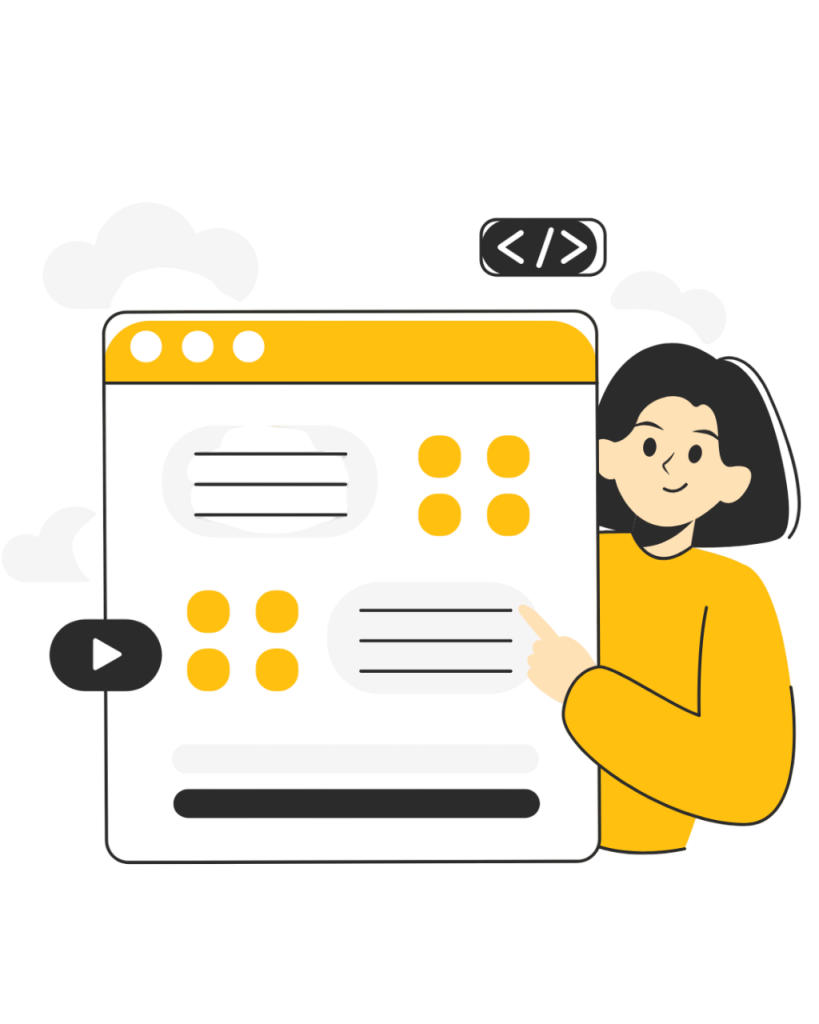Web accessibility ensures that websites and web applications are designed and developed to allow people with disabilities to access them. It includes ensuring that web content can be read and navigated by people who use assistive technologies like screen readers, magnifiers, or voice recognition software.
With the increasing importance of digital technology in our daily lives, web accessibility is becoming an increasingly important consideration for businesses and organizations worldwide.
Significance of Web Accessibility
Here are some crucial reasons why web accessibility is essential.
1. Legal Compliance
Many countries have laws that require websites to be accessible to people with disabilities. In the United States, for example, the Americans with Disabilities Act (ADA) requires that public entities and businesses provide equal access to goods, services, and information, which includes website accessibility.
In Us, Approximately 40-45% of businesses annually receive fines for non-compliance with web accessibility regulations.
2. Increased Audience
By making your website accessible, you can reach a larger audience of people who may have been excluded from accessing your content. For example, people with visual, hearing, cognitive, and motor impairments.
3. Improved User Experience
Web accessibility benefits everyone, not just people with disabilities. For example, video captions can benefit people who are deaf or hard of hearing; similarly, they can help people in noisy environments because they allow them to read the captions rather than attempt to listen to the video over the noise. Captions can also be useful for people who would like to watch videos in a language they are not fluent in.
4. Search Engine Optimization (SEO)
Making your website accessible can improve your search engine rankings, as search engines favor websites that are easy to navigate and understand.
For example, using descriptive and meaningful link text helps people who use screen readers and helps search engines understand the content on your website.
5. Corporate Social Responsibility
Making your website accessible is integral to being a socially responsible business. By providing equal access to your content, you demonstrate a commitment to diversity, inclusion, and accessibility.

6. Avoidance of Costly Redesigns
When you design a website with accessibility in mind, you can avoid costly redesigns. Retrofitting an existing website to be accessible can be time-consuming and expensive, so it is much more efficient to design for accessibility from the outset.
7. Future-Proofing
As technology advances, new assistive technologies will be developed to help people with disabilities access web content. One crucial way to future-proof your website is by designing it with accessibility in mind. Doing so ensures that your website is inclusive to all users and makes it more likely to be compatible with new technologies as they arise.
8. Increased Usability
While designing the accessible website, make sure to improve its overall usability. For example, using clear and concise language, providing logical navigation, and avoiding cluttered layouts can make your website easier to use and more enjoyable for all visitors.
9. Competitive Advantage
In an increasingly crowded online marketplace, providing accessible web content can give you a competitive advantage. By demonstrating a commitment to accessibility, you can differentiate yourself from competitors and build a loyal customer base.
Negative Consequences of Inaccessible Web Design
Here are the significant negative consequences of Inaccessible web design:
1. Legal Risks
Not having web accessibility can lead to legal challenges and penalties. Fines for non-compliance with web accessibility laws in Europe vary by country and can be significant. In the US, first-time offenses can result in penalties of up to £50,000, while in Germany, fines can be up to €60,000. Non-compliance can also result in legal action, reputational damage, and loss of customers.
2. Reduced Reach
Websites not accessible to people with disabilities effectively shut out a significant portion of the population.
World Health Organization claims approximately 15% of the world’s population has some form of disability. By not making your website accessible to this group of people, you are limiting your reach and potentially losing out on a significant amount of traffic and potential customers.
3. Negative Image
Not having web accessibility can damage your organization’s reputation. People with disabilities and their families are a significant portion of the population. If they feel that your website is not accessible or does not cater to their needs, they will likely have a negative view of your organization.
4. Poor User Experience
Websites not accessible to people with disabilities can provide a poor user experience for everyone.
For example, a website that is difficult to navigate with a screen reader may also be complex for someone using a mobile device or a slow internet connection. Providing accessible design makes your website easier to use for everyone.
5. Decreased SEO
Search engines, like Google, reward websites that are accessible and inclusive. Not having web accessibility can negatively impact your website’s search engine ranking, decreasing visibility and reducing traffic.
6. Missed Opportunities
Websites not accessible to people with disabilities may miss out on opportunities to serve this group.
For instance, an e-commerce site not accessible to people with visual impairments may miss potential customers who cannot access the site’s products.
How to Make a Webiste Accesbile?
Here are some critical steps to make a website accessible.
Engage The Services of a Web Developer
Hire a web developer experienced in web accessibility. Look for someone knowledgeable about accessibility guidelines and best practices which can implement the necessary changes to make your website inclusive for all users.

A professional web developer can perform the following task to make a website accessible:
1. Proper HTML Markup
A web developer will use semantic HTML to ensure that screen readers and other assistive technologies can accurately interpret the content. They use proper heading tags, lists, and other HTML elements to create a clear structure for the content.
2. Use Text Alternatives
Professional web developers utilize alternative text descriptions for images, videos, and other non-text content to ensure that users with visual impairments can comprehend the content.
3. Ensures the Website is Keyboard Accessible
Many users with disabilities rely on keyboards or alternative input devices to navigate websites. A web developer ensures all functionality, such as links and forms, can be accessed and used via the keyboard.
4. Uses Contrasting Colors
A web developer utilizes high-contrast colors for text and backgrounds to improve content readability for visual-impaired users.
5. Provides Clear Language
Web developer uses clear and simple language to make the content accessible to users with cognitive or reading disabilities. Avoid using complex words, jargon, or idioms.
6. Follows Web Accessibility Guidelines
To make the website accessible, web developers follow accessibility guidelines like Web Content Accessibility Guidelines (WCAG) published by the World Wide Web Consortium (W3C). These guidelines provide detailed recommendations for making websites accessible to all users.
Final Words
Web accessibility is a legal or ethical requirement and essential for creating an inclusive digital space. By making websites accessible to all users, we can ensure everyone has equal access to information and services, which is crucial in today’s digital world.


